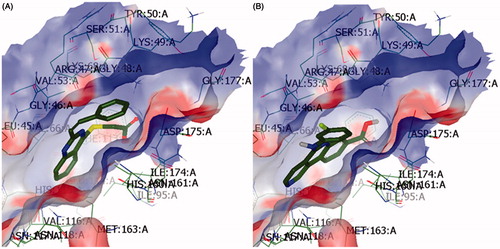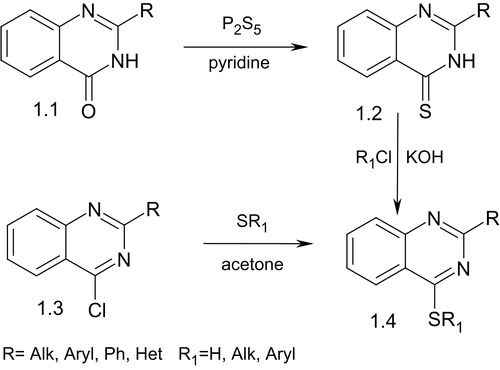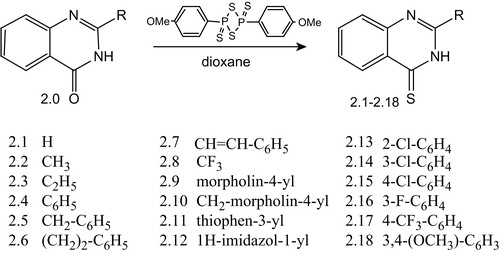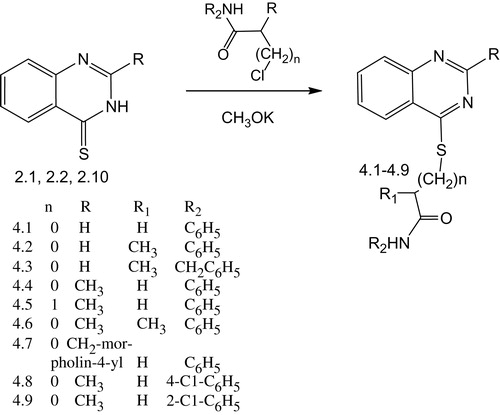Figures & data
Figure 1. Interaction of 2-(2-methyl-quinazolin-4-ylthio)-N-phenylpropionamide (4.6) (A) and reference (7-(pentan-3-yl)-7H-pyrrolo[3,2-f]quinazoline-1,3-diamine) (B) into the DHFR binding site.
![Figure 1. Interaction of 2-(2-methyl-quinazolin-4-ylthio)-N-phenylpropionamide (4.6) (A) and reference (7-(pentan-3-yl)-7H-pyrrolo[3,2-f]quinazoline-1,3-diamine) (B) into the DHFR binding site.](/cms/asset/bf5cfeb7-7302-4cad-8d08-43ee51cbc577/ienz_a_1018243_f0001_c.jpg)
Table 1. The obtained scoring functions of the investigated compounds and (7-(pentan-3-yl)-7H-pyrrolo[3,2-f]quinazoline-1,3-diamine) into DHFR binding site.
Table 2. Microorganisms’ growth inhibition zones (in mm).
Figure 2. Interaction of 2-styryl-(quinazolin-4-ylthio)acetic acid (3.7) (A) and Silmitasertib (CX-4945) (B) into the binding site of protein kinase CK2.






